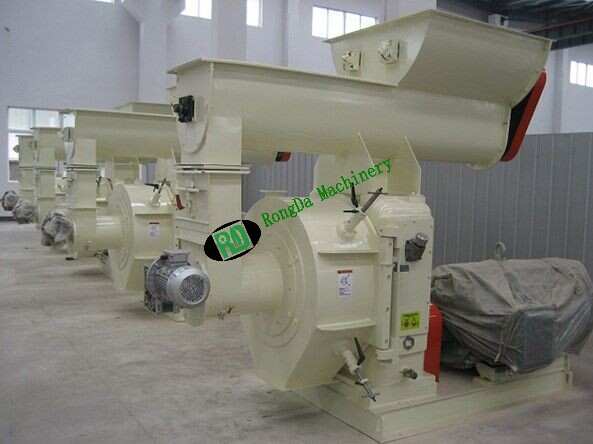Welcome to Rongda Machinery Co., Ltd
Toggle Navigation
In the contemporary quest for sustainable energy, the transition to environmentally friendly power sources has never been more urgent. Amid growing global emphasis on clean energy and environmental conservation, biomass pellets have surfaced as a promising renewable alternative. These pellets, derived from organic materials like wood and agricultural by-products, present a carbon-neutral substitute to traditional fossil fuels. A key innovation in this green revolution is the Biomass Pellet Machine, an advanced technology that transforms organic waste into efficient, eco-friendly fuel.
For those considering an investment in biomass pellet technology, this article delves into the machine’s advantages, operational mechanics, and its contribution to both environmental and economic advancements.

The Biomass Pellet Machine, also referred to as a pellet mill or pellet press, is engineered to compress biomass materials into dense, uniform pellets. The process involves grinding raw materials such as wood chips, sawdust, rice husks, or agricultural residues into fine particles. These particles are then compressed under intense pressure through a die, forming small cylindrical pellets. Post-production, these pellets are dried and cooled, ready for use as a sustainable energy source.
Utilizing heat and pressure, the machine ensures that biomass is compacted into pellets that are easy to store, transport, and combust. These pellets are pivotal in both industrial and residential heating, as well as in generating renewable electricity, making them a superior alternative to coal and other non-renewable fuels.
As a sustainable solution, biomass energy in pellet form is rapidly gaining momentum. Here’s why biomass pellets are becoming increasingly favored:
Biomass pellets originate from renewable organic materials like wood and agricultural by-products. Unlike fossil fuels, they are considered carbon-neutral because the CO2 released during combustion is offset by the CO2 absorbed by plants during growth, presenting an eco-friendly energy alternative.
With a higher energy density than raw biomass, pellets offer more energy per unit volume, translating into greater efficiency and cost-effectiveness compared to wood logs or chips. Biomass Pellet Machines ensure the production of uniform pellets that are easy to store and transport, further driving down costs.
A notable advantage of biomass pellets is their ability to convert waste into valuable energy. By transforming agricultural residues, sawdust, and wood chips into high-energy pellets, waste is reduced, thereby promoting circular economy principles.
Biomass pellets emit significantly less pollution and particulate matter compared to fossil fuels like coal. Burning these pellets results in far fewer emissions, aiding the global effort to reduce pollution and fostering a healthier environment.
Despite its relative simplicity, the Biomass Pellet Machine requires precise engineering for optimal efficiency and performance. The process includes the following steps:
Grinding: Raw biomass is initially fed into a grinder to break it down into smaller particles, enhancing its surface area for effective compression into pellets.
Drying: Moisture content can affect pellet quality, so raw materials are dried to ensure longevity and robustness of the final product.
Pelletizing: The dried biomass is then subjected to high pressure and heat within the pellet machine, where it is forced through a die to form pellets. The natural lignin present acts as a binder, securing the pellets’ structure.
Cooling and Packaging: Post-pelletizing, the pellets are cooled to room temperature and then packaged for storage. They are ready for use in heating systems, power generation, or for sale.
When selecting a Biomass Pellet Machine, consider the following factors to ensure a suitable investment:
Production Capacity: This determines the machine's output capability. Small-scale users may opt for machines producing a few hundred kilograms per hour, while industrial operations require higher capacity.
Pellet Quality: A superior machine delivers consistent pellet size and density, essential for efficient combustion and sustained heating performance.
Energy Consumption: Opting for energy-efficient machinery reduces operational costs and increases profitability over time.
Durability and Maintenance: Longevity and ease of maintenance are crucial; robust machines use high-quality materials ensuring minimal downtime.
Investment Value: Assess initial costs against potential energy savings and market value of produced pellets to evaluate long-term ROI. Though the upfront investment might be significant, the returns through pellet sales or energy savings can be substantial.
Investing in biomass pellet production is beneficial for both the environment and economy. Here’s how:
Environmental Impact Reduction: Transforming waste into clean energy reduces deforestation and environmental pollutants, promoting a sustainable future.
Economic Growth: Biomass pellet production creates new business opportunities, especially in rural locales with abundant agricultural waste, meeting the rising demand for renewable energy.
Versatility in Application: Beyond heating systems and industrial boilers, biomass pellets are marketable commodities that accommodate the global renewable energy demand.
The Biomass Pellet Machine stands as a critical innovation in the shift towards sustainable energy. By transforming waste into high-energy pellets, this technology not only fuels the growth of renewable energy but also advances waste reduction and environmental preservation. Whether for personal renewable energy use or new business ventures, investing in biomass pellet production offers a viable, eco-friendly solution to global energy needs.